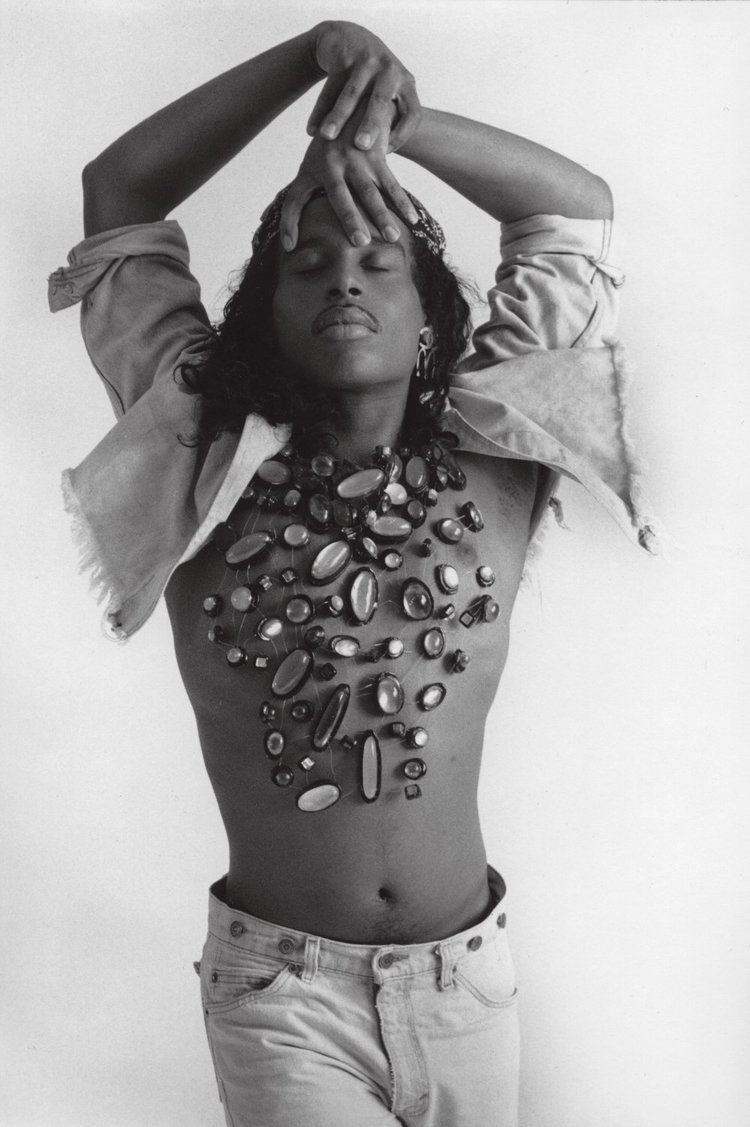Nationality American Name Willi Ninja | Role Music performer | |
 | ||
Full Name William Roscoe Leake Born April 12, 1961 Middletown, New York, U.S. Cause of death AIDS-related heart failure Occupation Dancer and choreographer Movies Anthem, Boys' Shorts: The New Queer Cinema Similar Octavia St Laurent, Angie Xtravaganza, Dorian Corey | ||
Masters at work ft la india willi ninja i can t get no sleep ken lou 12 mix 1993
Willi Ninja (April 12, 1961 – September 2, 2006) was an American dancer and choreographer best known for his appearance in the documentary film Paris is Burning.
Contents
- Masters at work ft la india willi ninja i can t get no sleep ken lou 12 mix 1993
- Paris is burning edit a willi ninja tribute
- Early life
- Career
- References

Ninja, a gay man known as the godfather of voguing, was a fixture of ball culture at Harlem's drag balls who took inspiration from sources as far-flung as Fred Astaire and the world of haute couture to develop a unique style of dance and movement. He caught the attention of Paris is Burning director Jennie Livingston, who featured Ninja prominently in the film. The film, a critical and box office success, served as a springboard for Ninja. He parlayed his appearance into performances with a number of dance troupes and choreography gigs. The film also documents the origins of "voguing", a dance style in which competing ball-walkers freeze and "pose" in glamorous positions (as if being photographed for the cover of Vogue). In 1989, Ninja starred in the music video for Malcolm McLaren's song "Deep in Vogue", which sampled the then-unfinished movie and brought Ninja's style to the mainstream. One year after this, Madonna released her number one song "Vogue", bringing further attention to the dancing style.

Paris is burning edit a willi ninja tribute
Early life
Born William Roscoe Leake in Middletown, New York, Willi was a self-taught dancer and was perfecting his voguing style by his twenties. It was from fellow voguers in Washington Square Park that Jennie Livingston first heard his name. While he didn't create the form, he worked at refining it with clean, sharp movements to "an amazing level". His influences included Kemetic hieroglyphics, young Michael Jackson, Fred Astaire, olympic gymnasts, and Asian culture.
Career
He participated in Harlem's drag balls with "children" from his House of Ninja. Like other ball "houses", HoN was a combination of extended social family and dance troupe, with Ninja as its Mother. He taught his "children" late into the night on the old Christopher Street pier and at the underground clubs.
Ninja was a featured dancer in many music videos including Malcolm McLaren's "Deep in Vogue" and "I Can't Get No Sleep" by Masters At Work featuring India. In 1994, he released his single "Hot" (another Masters At Work production) on Nervous Records. Ninja's later career included runway modeling for Jean-Paul Gaultier, performing with dance companies under Karole Armitage, and providing instruction to Paris Hilton on perfecting her walk. He opened a modeling agency, Elements of Ninja, in 2004, and made an appearance on Jimmy Kimmel Live!. Ninja was also prominently featured in the 1990 documentary Paris is Burning and the 2006 documentary release How Do I Look directed by Wolfgang Busch.
Ninja also danced in two of Janet Jackson's videos from her Album Rhythm Nation 1814, one of which was "Alright", whose remix featured late rap star Heavy D and cameo appearances by Cab Calloway, Cyd Charisse, and The Nicholas Brothers. He also was featured in "Escapade".
Ninja worked hard to care for his mother, Esther Leake, a wheelchair-bound woman suffering from Parkinson's. Her trips with Ninja to the ballet and the Apollo were inspiration for his later endeavors in dance.
Ninja died of AIDS-related heart failure in New York City on September 2, 2006 at age 45. After his death, he has continued to inspire many artists and music DJs. Ninja is a central figure in scholarship in LGBTQ studies, gender studies, and performance studies for his nonconforming and transgressive gender expression as an artist. His presence is articulated in the book Black Sexualities by Juan Battle and Sandra L. Barnes as one example.
